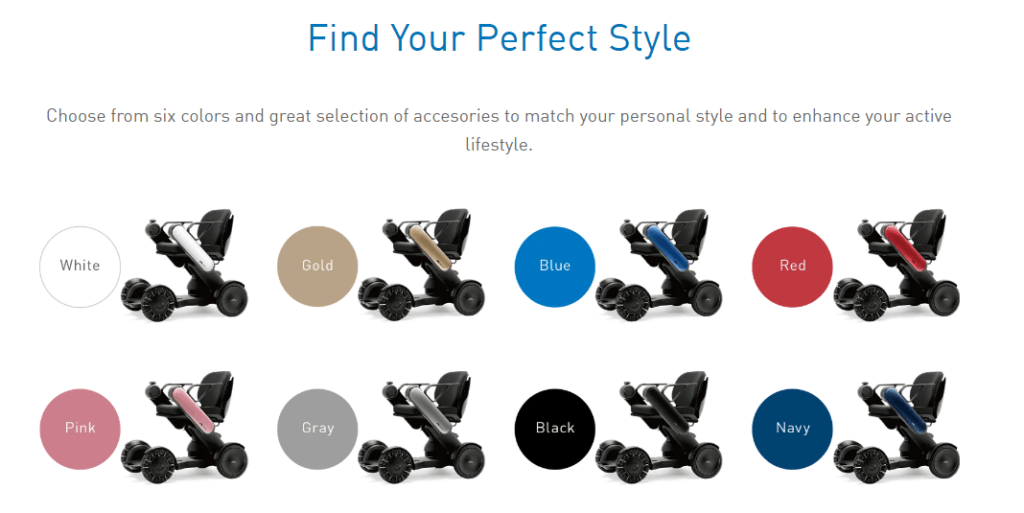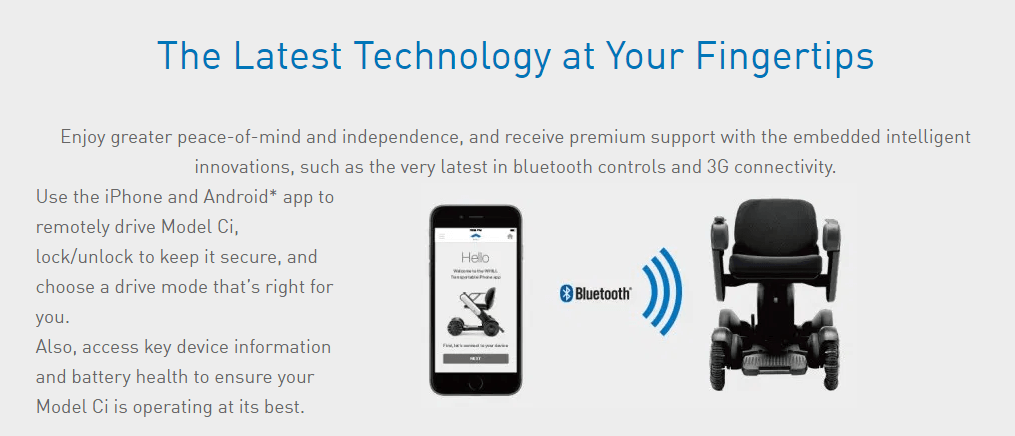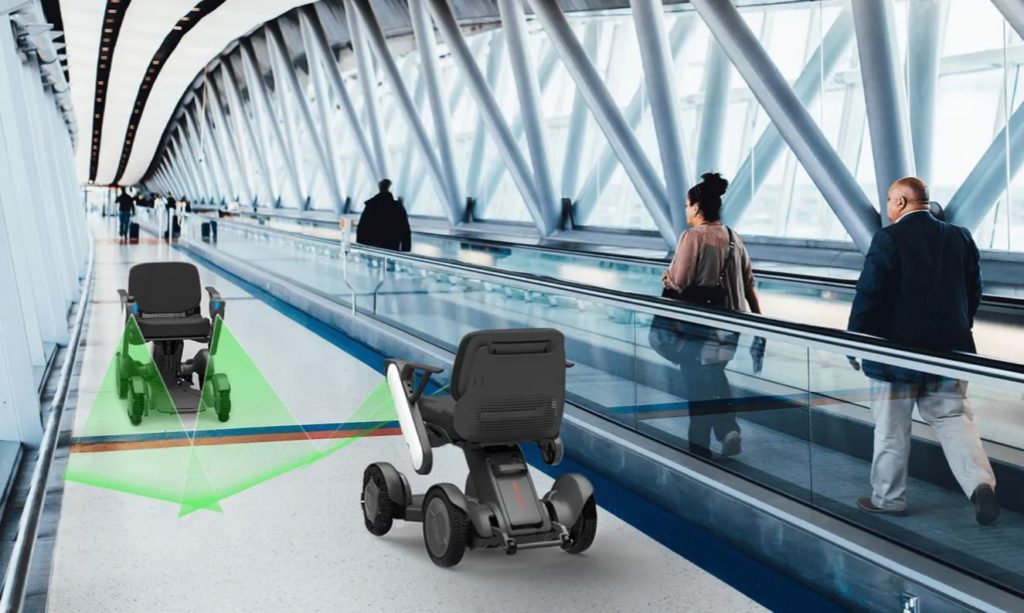WHILL: revolutionizing personal mobility with autonomous-driving wheelchairs

The current mobility market is biased in favor of able-bodied users. WHILL is here to address the gap!
WHILL: revolutionizing personal mobility with an autonomous-driving wheelchair
Many of us have witnessed the popularity of personal electric vehicles such as Lime scooters or segways in the streets of cities around the world. What we often fail to realize is that many of these products and services cater to abled-bodied users. WHILL, a start-up founded in 2012, seeks to address exactly this gap by providing an AI-enabled autonomous wheelchair. Since its global showcase at the Consumer Electronics Shows (CES) in 2019, it has taken the Mobility-as-a-Service (MaaS) space by storm with its slick design and advanced technology. Its mission is to enhance the freedom and independence of those with restricted mobility such as people with disabilities and the elderly, and make pedestrian travel fun[1].
(Reimagining the future of personal mobility)
Value creation: cool, safe, and easy mode of transport
The founding team at WHILL initially sought to create a revolutionary personal electric vehicle after hearing testimonies from wheelchair users that they felt uncomfortable venturing outside because the vehicle acted as such a clear marker of their disabilities[2]. Since traditional wheelchairs focused on functionality over design and individuality, there were few options, unlike other types of personal vehicles. Moreover, there were many physical obstacles such as bumpy roads or narrow sidewalks that made it difficult for wheelchair users to navigate public spaces freely.
(If drivers can customize their cars, why can’t wheelchair users?)
WHILL addressed these pain points by focusing on creating a groundbreaking design and by powering it with the latest advanced technology. As seen in the photo above, WHILL’s futuristic design departs from conventional wheelchairs. Moreover, it is fitted with LIDAR sensors and cameras that detect and avoid obstructions and have automatic ‘stop’ functions, similar to autonomous-driving cars. Furthermore, WHILL leverages GPS and Bluetooth to enable users to summon the vehicle to them on its app. In combination with speech recognition technology, it also allows users to simply say their desired destination, and WHILL takes you there. As a result, WHILL makes it much easier to navigate crowded spaces, is less energy-intensive for the user, more comfortable, safe, and eliminates the need for assistance from others.
(The WHILL app allows users to remotely drive their vehicle, and choose a driving mode that is most comfortable)
Value capture: from individual consumers to building IoT-enabled infrastructure
WHILL started by offering its EVs directly to consumers. True to its mission of making personal mobility available to everyone, it has focused on affordability. At a price tag of approximately $4600, it appears to be more expensive than existing electric wheelchairs, but good value for money given its advanced features[3].
As it develops its autonomous-driving technology, WHILL has also expanded into the B2B space. It envisions partnering with airports, airports, hospitals, shopping malls, and other public venues to provide a fleet of autonomous vehicles so that they can be shared amongst customers. The vehicle can be summoned, and can help transport the customer without the aid of any additional staff. Moreover, the vehicle can then drive itself back to the docks to be recharged after use. It is currently conducting trials at major airports around the world such as Dallas Fort Worth Airport, Schipol Amsterdam Airport and Abu Dhabi Airport[4].
(Autonomous driving WHILLs, coming to an airport near you…soon!)
Significant growth potential for assistive technologies and beyond
The assistive technologies market is still in its early stages, but it is estimated to become a $26 billion-dollar market by 2024[5]. WHILL is well-positioned to be one of the leading players in this place with its innovative design and IoT-enabled technology. There is significant potential, particularly in large urban areas with crowded spaces and dependence on public transportation. WHILL can fill the gap in shorter distance travel, for example for travel between different public transport modalities. Additionally, demographic trends, particularly in developed countries, provide a favorable environment for growth. In its home country of Japan, nearly 30% of the population is above 65 years-old.
More generally, WHILL’s technology has the potential to be used for a wide variety of applications beyond assistive technologies for people with restricted mobility. For example, it could be used for logistics inside smaller warehouses, or last-mile delivery right to someone’s doorstep on the tenth floor of an apartment building.
Key Challenges
A major challenge as it moves into the B2B space is to develop the front-end system and operations with these B2B partners. WHILL so far has developed the hardware and software for its AI and back-end systems powering the vehicle. However going forward, it will need to work closely with its B2B customers to integrate the vehicles into their operations[6].
Another key challenge will be to ensure safety. Even one accident, even if it is not directly attributable to WHILL, can cause huge reputational damage to the company, and can hinder its penetration. We have seen this with Uber’s self-driving cars. Given that there is no physical protection for the WHILL user compared to a driver in a self-driving car, the risks can be considered to be fairly high.
Related to safety, regulations may pose further obstacles. Autonomous vehicles and personal electric vehicles continue to face strict regulations around the world. Since WHILL is both an assistive device as well as an autonomous electric vehicle, it will be interesting to see how regulatory bodies strike the balance between promoting greater mobility for people with disabilities on the one hand, and protecting their safety on the other.
[1] WHILL website https://whill.us/about-company/ Accessed April 19th, 2020
[2] Ibid.
[3] Spinlife website https://www.spinlife.com/critpath/match.cfm?categoryID=219 Accessed April 19th, 2020
[4] WHILL News https://whill.us/whill-expands-airport-trials-of-self-driving-personal-mobility-devices-to-north-america/ Accessed April 19th, 2020
[5] Jonathan Shieber (June 27, 2019) Assistive Technologies will be a $26 billion-dollar market, and investors are only now addressing it. Tech Crunch. https://techcrunch.com/2019/06/27/assistive-technologies-will-be-a-26-billion-dollar-market-and-investors-are-only-now-addressing-it/ Accessed April 19th, 2020
[6] WHILL website https://whill.us/maas-business/ Accessed April 19th, 2020





